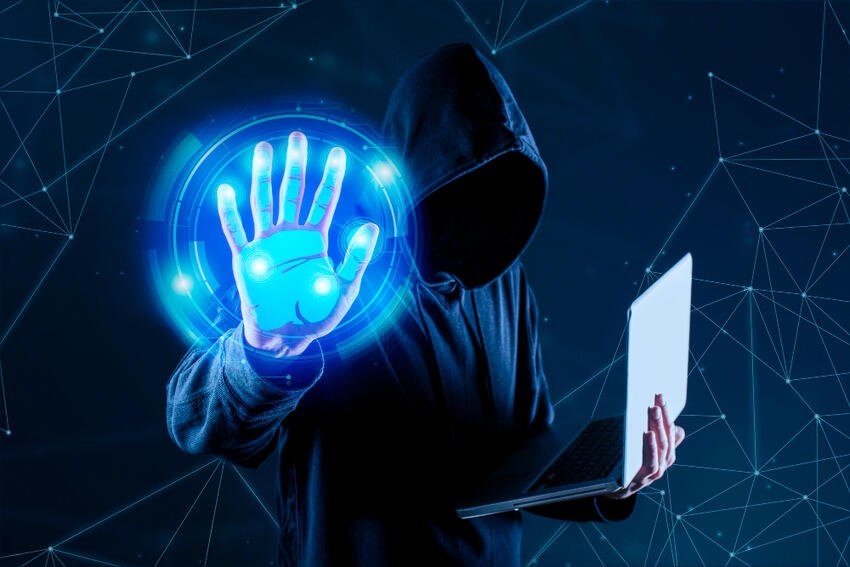Introduction
In today’s hyper-connected world, cyberattacks have become a daily reality. Enterprises, small businesses, governments, and even individuals face growing risks from sophisticated cybercriminal groups and state-sponsored actors. The frequency and impact of attacks have risen sharply, with ransomware incidents crippling hospitals, phishing schemes stealing millions from financial institutions, and advanced persistent threats targeting national infrastructure.
The shift toward digital transformation, cloud adoption, and hybrid work environments has expanded the attack surface significantly. Employees accessing sensitive systems from home networks, the widespread use of mobile devices, and the rapid growth of the Internet of Things (IoT) have created countless new entry points for attackers.
To effectively protect digital assets, it is critical to understand both the types of cyberattacks and the defenses that can help organizations stay ahead. Awareness of these threats is the first step toward resilience.
What Is a Cyber Attack?
A cyber attack is any deliberate attempt by malicious actors to gain unauthorized access to digital systems, networks, or data with the intent to steal, disrupt, damage, or manipulate. Unlike accidental system failures, these attacks are planned and executed with malicious intent, often motivated by financial gain, espionage, sabotage, or political agendas.
Cyberattacks can take many forms, from malware infections and phishing schemes to large-scale denial-of-service assaults. While cybercrime generally refers to illegal activities for profit, and cyber warfare involves attacks sponsored by states for strategic purposes, cyberattacks encompass all these malicious digital activities.
Understanding cyber attacks and how to defend against them is a crucial priority for businesses navigating today’s hostile digital landscape. Modern enterprises cannot afford to ignore these risks if they want to protect their data, maintain customer trust, and ensure compliance with regulations.
Common Types of Cyber Attacks
Malware Attacks
Malware, short for malicious software, includes viruses, worms, spyware, and ransomware. These programs are designed to infiltrate systems, steal information, disrupt operations, or encrypt files until a ransom is paid. Ransomware, in particular, has had devastating effects on healthcare providers, energy companies, and municipal governments worldwide.
Phishing and Social Engineering
Phishing exploits human trust rather than technical weaknesses. Attackers pose as trusted contacts, often through email or fake websites, to trick individuals into revealing credentials or financial data. Spear-phishing and Business Email Compromise (BEC) are highly targeted forms of this attack and continue to rise globally.
Denial-of-Service (DoS) and Distributed DoS (DDoS)
DoS and DDoS attacks overwhelm servers with traffic until they crash or become unusable. Recent attacks leveraging massive botnets of compromised IoT devices highlight the scale of disruption attackers can achieve.
Man-in-the-Middle (MitM) Attacks
In MitM attacks, cybercriminals intercept communications between two parties to steal or manipulate data. Unsecured Wi-Fi connections in public places are a common gateway for these attacks.
Insider Threats
Not all threats come from outside. Employees, contractors, or partners can intentionally or accidentally compromise security. Malicious insiders may sell sensitive information, while accidental insiders might misconfigure systems or fall for phishing attempts.
Exploiting Vulnerabilities
Attackers often exploit unpatched software or zero-day vulnerabilities. Legacy systems and misconfigured cloud services provide opportunities for breaches that could have been prevented with timely updates and proper configurations.
The Impact of Cyber Attacks
The consequences of cyberattacks extend far beyond immediate disruption. Financial losses include ransom payments, downtime, legal costs, and recovery expenses. Reputational harm can cause customers to lose trust and take their business elsewhere.
Failure to protect sensitive information can also result in heavy penalties under regulatory frameworks such as GDPR, HIPAA, and PCI DSS. For critical infrastructure operators, cyberattacks may even become matters of national security, disrupting utilities, healthcare services, and supply chains.
How Cyber Attacks Work – Attack Vectors
Cyberattackers typically exploit attack vectors, which are pathways or entry points into systems. Examples include phishing emails carrying malicious links, downloads infected with malware, and weak passwords that allow brute-force access.
While an attack vector is the method of entry, the attack surface refers to the total number of exploitable points across an organization. As businesses embrace cloud services and mobile work, the attack surface grows, giving adversaries more opportunities to strike.
Defense Strategies Against Cyber Attacks
Zero Trust Security Models
The Zero Trust approach rejects implicit trust and enforces continuous verification. Micro-segmentation ensures that even if one area of the network is compromised, attackers cannot move laterally to other systems.
Strong Identity and Access Management
Multi-factor authentication (MFA) ensures that stolen passwords alone are not enough to breach systems. Privileged access management protects administrative accounts from abuse.
Encryption and Secure Communications
Encrypting data in transit and at rest ensures that even if intercepted, information remains unreadable. VPNs and TLS are crucial for secure communications.
Regular Patching and Vulnerability Management
Keeping systems up to date reduces the risk of known vulnerabilities being exploited. For legacy systems, virtual patching can provide additional protection.
Employee Awareness and Training
Since human error is often the weakest link, ongoing awareness programs and phishing simulations help employees recognize threats.
Continuous Monitoring and Threat Intelligence
Security Information and Event Management (SIEM) tools combined with AI-driven analytics provide real-time visibility into anomalies. Leveraging global threat feeds enhances organizations’ ability to anticipate attacks before they occur.
Industry-Specific Risks and Defenses
The finance sector focuses on fraud prevention and securing digital transactions. Healthcare organizations must protect sensitive patient data and ensure the security of telehealth services. Retailers defend e-commerce platforms and point-of-sale systems from breaches. Manufacturers safeguard operational technology (OT) and industrial IoT devices, which are often targets due to weak protections.
Emerging Trends in Cyber Attacks
Attackers are increasingly using artificial intelligence to power phishing campaigns, including those driven by deep fakes, which can facilitate deception. Supply chain attacks have also risen, with adversaries compromising third-party vendors to infiltrate larger organizations.
The rollout of 5G and edge computing introduces new vulnerabilities that security teams must prepare for. Additionally, the rise of quantum computing poses potential risks to current encryption methods, making research into quantum-resistant solutions critical.
Challenges in Cyber Defense
Defending against modern attacks is not without hurdles. Organizations face shortages of skilled cybersecurity professionals, making it harder to monitor and respond to incidents effectively. Hybrid and multi-cloud environments add complexity, while the need to balance user convenience with security often creates tension.
Best Practices for Long-Term Cyber Resilience
Proactive security requires regular penetration testing and red teaming to uncover weaknesses before attackers do. Developing robust backup and disaster recovery plans ensures that organizations can recover quickly from disruptions.
For many, partnering with managed security service providers (MSSPs) offers access to expertise and resources that internal teams may lack. Ultimately, building resilience requires a layered approach that integrates people, processes, and technology.
Conclusion
Cyberattacks are an unavoidable reality in today’s interconnected world, but their impact can be minimized through preparation and the implementation of layered defenses. By understanding the threats, organizations can develop proactive strategies that combine strong technology, employee awareness, and adaptive processes.
Cybersecurity is no longer just an IT function—it is a business necessity that underpins trust, resilience, and long-term growth.
FAQs
1. What is the difference between a cyber attack and a cyber threat?
A cyber threat refers to the possibility of a malicious event, while a cyber attack is the actual execution of that event, such as deploying malware or stealing data.
2. Can small businesses be targeted by cyber attacks?
Yes. Small businesses are often targeted because they may lack strong defenses, making them attractive to attackers seeking easy opportunities.
3. What are the first steps an organization should take after a cyber attack?
Immediate actions include isolating affected systems, notifying relevant stakeholders, beginning forensic investigations, and activating the incident response plan to limit damage and recover quickly.
Read Dive is a leading technology blog focusing on different domains like Blockchain, AI, Chatbot, Fintech, Health Tech, Software Development and Testing. For guest blogging, please feel free to contact at readdive@gmail.com.



